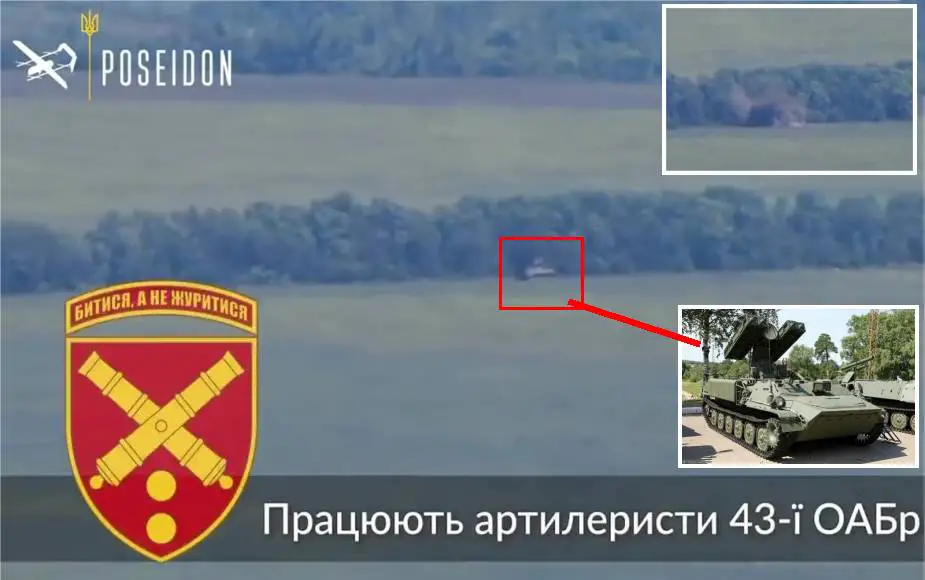- Army
- Conflicts in the world
- Israel - Iran conflict 2025
- Pakistan - India Conflict 2025
- Russia Ukraine War 2022
- Libya conflict day by day
- HAMAS - Israel War 2023
- Operation Serval in Mali French Army
- Sangaris operation Central African Republic
- Sangaris opération militaire République Centreafrique
- Ukraine - Russia conflict
- Syria conflict news
- Defence & Security Industry Technology
- Armies in the world
- Analysis Defense and Security Industry
- Conflicts in the world
- Navy
- Air
Ukraine targets Russian anti-aircraft capabilities with destruction of 2 SA-13 air defense systems
In a recent development in the Russian-Ukrainian conflict, the Ukrainian military has successfully destroyed two SA-13 Strela-10 air defense systems. These strikes were carried out individually but on the same day, specifically on June 26, 2023, demonstrated the capabilities and coordination exhibited by Ukrainian drones and artillery units in their engagement against Russian forces. The prioritization of destroying Russian air defense systems is essential in the counteroffensive scenario, given the importance of controlling airspace in modern warfare.
Follow Army Recognition on Google News at this link

Ukrainian soldiers use precision-guided artillery munition to destroy Russian SA-13 Strela-10 air defense missile vehicles. (Picture source Video footage Ukrainian army)
Air superiority can provide significant advantages in a conflict. These advantages include the ability to carry out aerial reconnaissance, strike enemy targets from the air, defend friendly forces from air attacks, and provide logistical support to ground forces.
In the context of a counteroffensive, achieving air superiority could be crucial for the Ukrainian forces. Russian air defenses are generally regarded as advanced and robust, incorporating a wide range of systems that can engage enemy aircraft, missiles, and drones at various ranges and altitudes.
Destroying or neutralizing these air defenses could involve a combination of kinetic strikes (using precision-guided weapons, possibly stealthy or hypersonic), electronic warfare (to jam or deceive radar systems), and cyber operations (to disrupt command and control networks).
The SA-13 9K35 Strela-10 system, consisting of the 9A35 combat vehicle and the SAM 9M37 missile, originated from the Soviet era. Weighing 12.3 tons and based on the MT-LB, the 9A35 provides good mobility with its independent torsion bar suspension and 240 horsepower diesel engine. The maximum speed of the missile is near Mach 2, the engagement range is from 500 to 5,000 m (0.3–3 miles) and the engagement altitude is between 10 and 3500 m (33-11,500 ft).
In the first strike, a Ukrainian H10 Poseidon drone guided a PzH-2000 155mm self-propelled howitzer with precision, potentially using 155mm M982 Excalibur ammunition. The successful neutralization of the air defense system was captured on video by the Ukrainian 43rd Artillery Brigade and shared on Twitter by OSINTtechnical.
The H10 Poseidon VTOL, measuring 2.1 meters in length with a wingspan of 4.6 meters, played a crucial role in this operation. Weighing 40 kilograms with a maximum payload capacity of 4 kilograms, this drone is used in covert operations and aerial surveillance. With a top speed of 85 km/h and a range of 180 kilometers, the H10 Poseidon can operate at a service ceiling of 5 kilometers with a maximum endurance of 2.5 hours.

Ukrainian forces use guided rocket ammunition to target Russian SA-13 Strela-10 air defense missile vehicles. (Picture source video footage Ukrainian Army)
In the framework of combat operations in Ukraine against Russian forces, the PzH-2000 self-propelled howitzer demonstrated its effectiveness. Equipped with a powerful 155mm/L52 barrel and capable of engaging targets at a range exceeding 420 kilometers with advanced ammunition like the Excalibur. With dimensions of 11.7 meters in length, 3.5 meters in width, and 3.4 meters in height, weighing 57 tons, the PzH-2000 carries a payload of 60 projectiles and 288 modular charges. It boasts a rapid rate of fire, capable of up to 10 rounds per minute, and is operated by a primary crew of three personnel with two backups.
The 56th Separate Motorized Infantry Brigade executed the second strike, captured on video, targeting another 9K35 Strela-10 in the Donetsk Oblast region.
The Ukrainian forces are believed to have used the GMLRS M30A1 rocket munition, known for its high precision, to target the Strela-10 complex. These guided rockets are fired from either a HIMARS or an M270 GLMRS launcher and have a range of 15 to 84 kilometers. They employ inertial guidance with GPS assistance. The M30A1 rockets are equipped with an Alternative Warhead (AW) carrying a 200lb-class high-explosive warhead. Typically deployed in pods of six missiles, upon impact, the warhead disperses 182,000 pre-formed tungsten fragments to neutralize targets across a broad range.
The two strikes, executed with precision and efficiency, which led to the destruction of two Russian Strela-10 air defense systems in a single day, serve as an illustration of the capabilities and coordination displayed by Ukrainian drones and artillery units.


























